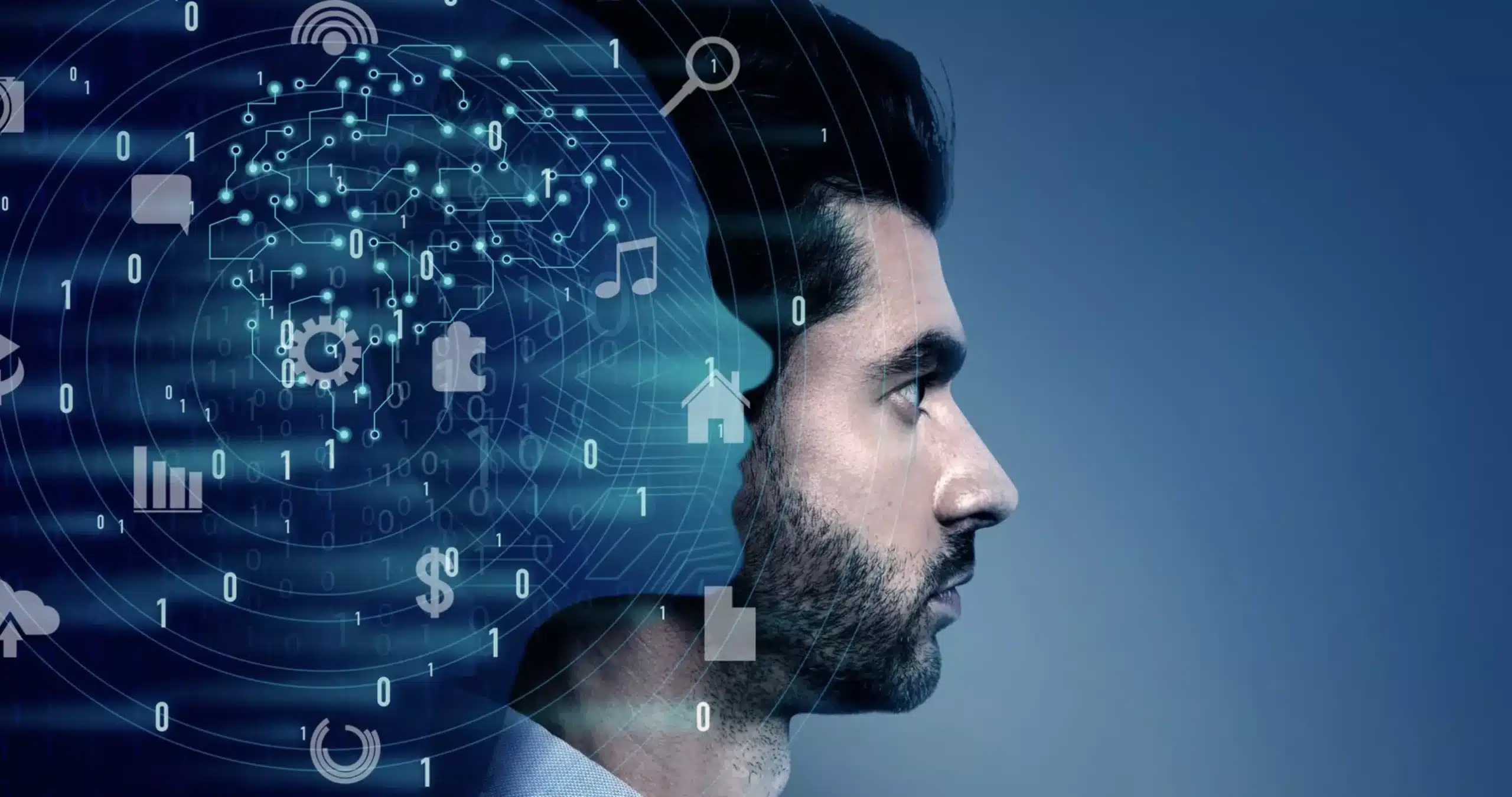AI, Artificial Intelligence is a widely utilized branch of computer science that is capable of reasoning, problem-solving, and decision-making. It is designed to match the cognitive human intelligence which performs those tasks that require human brain reasoning. It also automates manual processes and streamlines regular repetitive tasks associated with corporate functioning.
AI in people management is a revolutionized process that enables managers or employers to make more informed decision making. It also improves the employee experience by streamlining processes associated with the operation of people management.
What is People Management?
People management also known as Human Resource Management refers to the procedure of handling and developing the workforce in an organization. It includes overseeing various aspects of human resource management which includes recruitment, hiring, performance management, employee engagement, employee satisfaction, and employee retention.
Basically, it is focused to streamline the entire work cycle of the employees in an organization starting from recruitment and hiring to the exit of the employees.
8 Key Roles and Responsibilities in People Management
1. Planning
Manpower planning and the budget associated with it is the first and foremost responsibility of human resource management. Planning includes:
- Manpower Planning
- Resource Planning
- Hiring Schedule
- Required Designated Posts Hiring
- Cost Per Recruitment
- Employee Wellness
- Employee Engagement
- Policies And Procedures
2. Organizing
The next in a row is organizing which means starting with the process of resume screening/parsing to shortlisting the best suitable candidate for the required posts in the organization. It also involves:
- Classification of Activities for Different Employees
- Duties Assignment
- Team Inclusion
- Authorization of Tasks and more
3. Staffing
Staffing includes the process starting from interviewing candidates to successfully onboarding the selected candidates. It also involves:
- Recruitment
- Training and Development
- Promotion
- Appraisal and more.
4. Directing
It denotes the orientation of the newly joined employees, the entire onboarding procedure, and directing the candidates towards the achievement of organizational goals, work culture, and ethics to be followed. It is applicable for both new and persisting employees for directing them to maintain a healthy and productive work environment. It includes:
- Supervision
- Communication
- Leadership
- Encouraging Employees
5. Controlling
Controlling includes activities such as:
- The Setting of Standard Performance
- Measuring Actual Performance
- Finding out the Deviation Between the Standard and Actual Performances.
- Initiating Corrective Actions to Combat Deviations.
6. Coordinating
It denotes coordinating with the employees regarding their documentation which is essential as per the organization’s policies. Documentation involves:
- Identity Proof Documents
- Joining Documents
- Payroll-related Documents
- Exit Documents
- Resumes of Candidates and more.
7. Reporting
It denotes reporting the people management stats, metrics, and areas of improvement that need intervention. It further includes reports on:
- Employees Performance
- Organizational Growth
- Diversion Statistics Reports
- Performance Analysis Trend Reports & more.
8. Budgeting
Budgeting denotes planning the recruitment cost per hiring as per the requirement of the organization. It is an important aspect of people management as business statistics is majorly dependent on its financial health. It also involves:
- Hiring Cost
- The Actual Cost Incurred Towards Goal Accomplishment vs Actual Accomplishments
- Budget Guidance Report
- Scheduled Expenses
- Miscellaneous Costs Incurred and more.
Also Read:
How AI Helps in People Management?
AI has a significant impact on the management of human resources in an organization. It provides insights into the internal matrices that evaluate organizations’ productivity as well as furnish ways and resources for surging efficiency.
It automates the repetitive tasks associated with managing human resources and streamlines complexities that help in making more informative decisions. There are several other benefits of AI in HR that help in people management in an organization which involves:
➔ Performance Management
The most crucial function of people management is managing the performance of staff. AI helps automates the process of analyzing the matrices of employees’ performances by providing real-time feedback and insights into the statistics of employees’ accomplishments.
For a mid and large-scale business managing performances manually is not only tough but also skein hence, refraining the focus of management to concentrate on prioritized tasks and resulting in degrading productivity of employees.
Automating performance management simplifies convolution and helps surge the performances to the maximum.
➔ Streamlines Employee Experience
Another vital aspect of AI that benefits people management is it automates crucial processes like onboarding of candidates, and resume parsing hence giving a hassle-free experience to employees.
This elevates the company’s image and helps the organization to stay rooted in the cut-throat market.
➔ Talent Acquisition & Planning
AI helps in grasping the best talent into the organization’s workflow by automatically parsing the resumes that appropriately match the job necessities.
In addition, through its algorithms, it gives a briefed insight which is essential to make informed decisions that have long-term significance in workforce planning and recruitment.
Furthermore, it saves inestimable time and resources of a business which if profligate can cost a bomb to the organization’s financial health as well as reputational image.
➔ Workforce Planning
Workforces are considered the stanchion of any organization, so it is extremely important for the management to plan the flow of work as well as their employees in accordance with the necessity to avoid wastage of resources imprudently.
AI-generated algorithms give a detailed analysis of organizations’ needs in specific prioritized areas hence enhancing the aptness in workforce planning without wasting valuable resources.
➔ Budget Guidance
Budget guidance refers to keeping a check on the allocated budget for the overall business processing in a year. In people’s management, it is extremely essential to keep track of the cost per recruitment to avoid being spendthrift on hiring.
AI helps keeps the budget allocated for hiring in check and notifies diversion. This as a result eliminates excessive spending on hiring and benefits the organization.
➔ Training & Development
AI-generated content assists in training newly hired employees by providing vast knowledge. AI-generated content-sharing, interactive platforms provide a wider reach to other shared resources which is essential for skills development.
The inter or intra-knowledge-sharing platforms enable researchers to share the discovered knowledge hence making it accessible to others for usage.
In addition, the interactive platforms serve as a query-solving platform for the employees enabling them to explore an extensive set of learning further enhancing their skills.
➔ Employee Engagement, Retention & Satisfaction
AI further helps in enhancing the retention rate of employees by providing analytical metrics that define their performance statistics. Hence it exposes the grey areas affecting their satisfaction.
Further, it also gives an idea of altering the employees’ engagement activities as per their participation metrics. This adds to the productivity of the organization by elevating employee satisfaction and robust the business workforce.
How AI Works for HR?
By amassing data from automated performance management software to determine engagement levels, feedback, and insights on why employees leave, AI can provide predictions at the click of a button at team as well as company levels.
The predictions can include anything from giving out names of employees that are worth retaining and the ones who are most likely to quit or the employees that will come up with the most innovative solutions.
Artificial intelligence systems identify patterns and create connections that would be intricate as well as time-consuming for humans to unravel. Such a level of predictive intelligence report would allow HR professionals to become strategic and proactive.
Further, AI-powered suggestions or prescriptive intelligence would forerun predictive analytics. It uses historical data and recommends best practices as well as tools before coming up with the most impactful actions for resolving predicted or identified problems.
This would help HR leaders and managers to get good insights into the areas of opportunities as well as the ones that need attention.
Benefits of AI for HR in People Management
A few other benefits that HR can avail of AI include:
1. AI as Skill Enhancer
AI shuns the cumbersome task of manual analysis associated with developing people management programs and offers suggestions based on intelligent data rather than relying on gut feelings. It helps HR people to make sound and less-biased decisions.
The power of AI is not only useful in fetching optimum return on investment (ROI) or predicting future trends, as the real advantage seeps in when artificial intelligence leverages this data to interpret insights into actions.
All the in-depth and instant insights offered by AI equips HR managers and leaders with the right set of data to recruit, retain and motivate employees in the long run.
2. AI as Arbiter in Decision-Making
AI works as an arbiter by providing statistically advanced metrics through a detailed evaluation of employees’ demographics, performance metrics, and attrition rates. It identifies the pattern of performances and responses of employees and yields predictions.
It enables HR professionals to anticipate workforce needs and develop strategies for development and succession planning.
3. AI as Knowledge Provider
AI provides a sea of knowledge by making available resources relevant to HR’s needs. Alongside, the virtual assistant and chatbot enable users to share knowledge as well as interact which as a result yields in fostering of knowledge in HR professionals as well as employees and adds to their productivity.
3. AI in HR Analytics
AI in HR analytics has various significant impacts on HR management as it provides algorithms that analyze HR requirements and helps assists in streamlining processes like candidate sourcing, resume Screening, predictive analysis, burnout detection and more.
Closing The Curtains!
AI-powered tools combined with human touch would render more powerful and intelligent HR solutions in the future. AI has the potential to create more people-oriented workplaces that would breed happy as well as contended employees by subtracting biases.
As human resource functions are turning more and more accountable for driving business outcomes. In the last few years, harnessing the power of AI is one of the crucial and life-changing tech trends that HR managers and leaders can embrace to drive people management.










